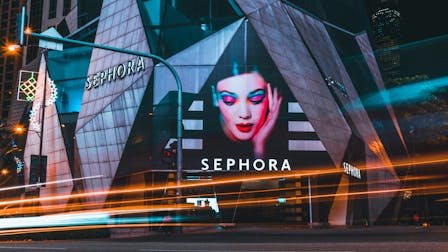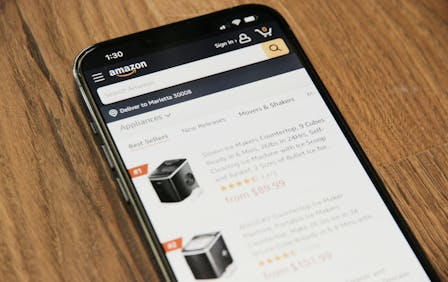The Connected Commerce POV: What Is Connected Commerce?
Introducing a New Paradigm for Modern Brands
The lines between marketing, media, and commerce have not just blurred, but collapsed entirely. Today’s consumers don’t think in channels and their shopping habits aren’t linear. They move fluidly between TikTok and Target, between a DTC site and a third-party marketplace, expecting brands to show up consistently, clearly, and contextually wherever they are.
The problem? Most brands still operate in silos. Teams are divided by channel. Strategies are disconnected, and it shows. According to Salesforce, 79% of customers expect consistent interactions across departments, yet 55% say it generally feels like they're communicating with separate departments rather than one company.
But when brand, retail, and performance efforts are disjointed, the consumer experience is too. That’s why we believe it’s time for something new. Not just a marketing tactic or a service model, but a new philosophy.

Connected Commerce: A Modern Growth Philosophy
Connected Commerce is our answer to fragmentation, fatigue, and formulaic approaches plaguing brand growth today. It’s not just omnichannel, but omnipresent, integrated, and built around real behaviors of real people.
Connected Commerce is an integrated growth philosophy that treats every consumer touchpoint—from TikTok to Target—as part of one unified brand experience.
It’s about collapsing internal siloes to reflect external realities. Shoppers want to see and experience brands across the entire commerce ecosystem, and they expect those brands to show up consistently, intelligently, and creatively across the entire journey. Connected Commerce is about ensuring your brand is searchable on Google, discoverable on TikTok, reinforced with reviews on Amazon, tangible at Sephora, and community-led with engaging content on YouTube. This complete ecosystem allows your brand to meet the consumer where they are, fostering trust and organic engagement.
At a recent BeautyMatter panel dubbed The Amazon Effect: Beauty’s Evolution in the Marketplace, BeautyMatter Co-Founder and President John Cafarelli said “if you’re a brand and you’re not talking about Amazon, you need to be.”
Nielsen IQ data shows that ecommerce platforms now account for 41% of all beauty and personal care sales in the US, with Amazon holding a substantial share.
“This rapid ecommerce growth significantly surpasses that of traditional retail. Amazon’s evolving role in the beauty and wellness marketplace demonstrates how the platform has transformed from a simple ecommerce site to a complex ecosystem that influences brand strategies across multiple channels,” wrote Cristina Montemayor for BeautyMatter.
Front Row Chief Revenue Office Chris Skinner calls the evolution of traditional marketing channels a “Stacked Ecosystem.” Today’s younger demographic of consumers navigate effortlessly across platforms. They might stumble upon a product on TikTok, check the reviews on Amazon, and complete the purchase wherever it’s most convenient. This behavior demands that brands build unified, cross-channel experiences that guide and support the customer journey at every touch point.

Why the Old Model No Longer Works
Traditional commerce strategies are no longer effective because key functions often operate in isolation; media is managed separately from marketplace efforts, retail and DTC teams are rarely collaborative, creative work happens apart from marketplace efforts, retail and DTC teams rarely collaborate, creative work happens apart from performance marketing, and data remains trapped within channel-specific silos.
In fact, 58% of marketers report that their teams still work in silos, according to Accenture Interactive. This lack of alignment comes at a steep cost: companies with integrated go-to-market strategies grow 19% faster and are 15% more profitable, as found by Forrester Research. At the same time, consumers engage with six to eight brand touchpoints before making a purchase and expect a seamless, cohesive experience at every interaction.

Why Now? The Timing is No Coincidence
Three forces are accelerating the need for a Connected Commerce mindset:
- Cultural: Shoppers, especially Gen Z, are discovery-led, mobile-native, and impatient with friction.
- Technological: The rise of AI, retail media networks, social commerce, and creator influencer is collapsing the path to purchase.
- Economic: The stakes are higher, budgets are tighter, and the need for measurable, efficient growth has never been greater.
And with a new generation using platforms like TikTok, ChatGPT, Instagram, and YouTube as search engines, the “top of funnel” isn’t just shifting but dissolving entirely.
What This Means for Brands
The brands that will win in the next decade treat every consumer touchpoint as a brand moment. This includes breaking down internal silos and aligning teams around unified growth goals, investing in data, and orchestrating across platforms, including performance, creative, retail, and marketplace.

How Front Row Helps Brands Thrive in the Connected Era
At Front Row, we didn’t retrofit this philosophy, but built our model around it. Our approach is rooted in true integration, with expert teams working across brand strategy and design, retail and visual merchandising, performance and retention marketing, marketplace management, and data and analytics. We call this Connected Commerce. It’s the engine behind how we help beauty, health, wellness, and CPG brands grow holistically, aligning every touchpoint, not just optimizing in silos. This blog marks the start of our Connected Commerce POV series. In the next piece, we’ll explore one of the biggest casualties of this shift: the traditional marketing funnel.
